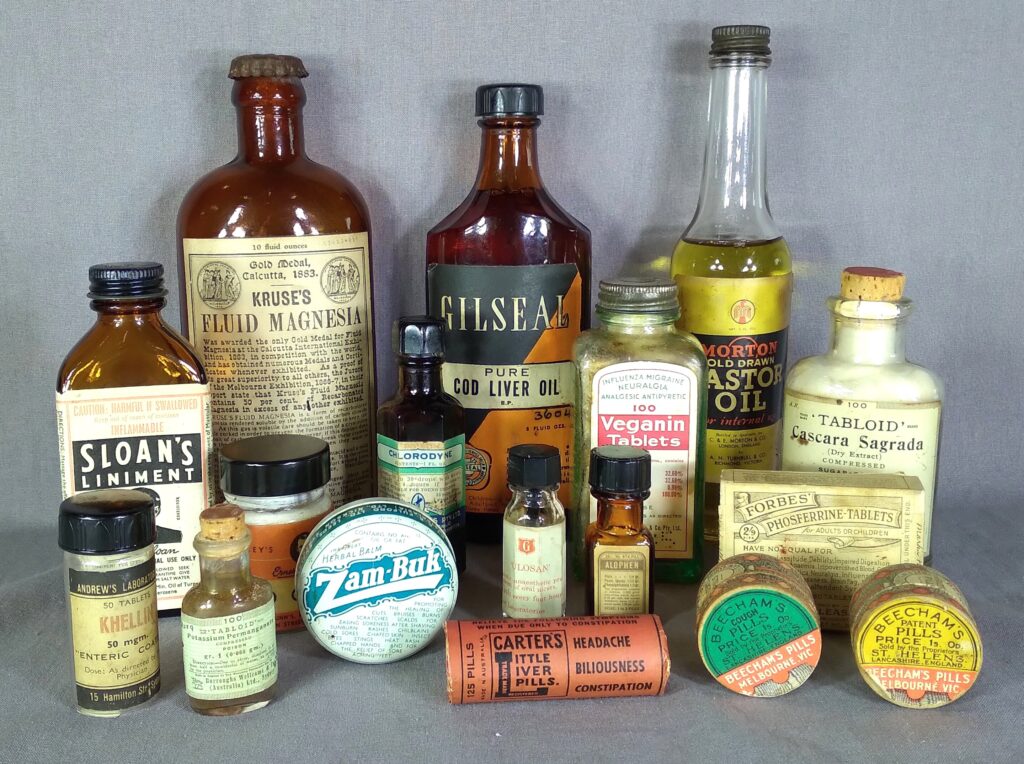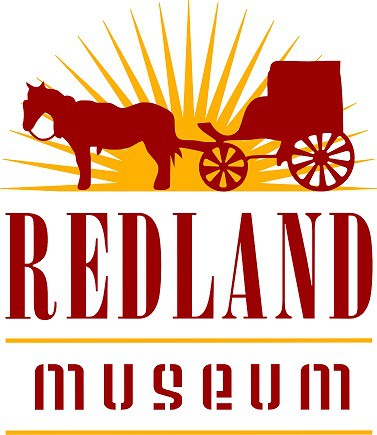
Today we expect easy access to expert and professional medical services and hospitals. We forget that this was not the case for the first century of settlement in the Redlands. People with illness or injury were often left to their own resources to find a treatment. Society was at the mercy of anyone who wished to create and sell uncontrolled and unproven patent medicines, and there were many in the business. The term patent medicine comes from the 17th and 18th century when makers of medicinal elixirs obtained royal letters patent to endorsement their products. Promoters made extensive use of advertising to keep these products in the public eye, and patent medicines were the first branded and heavily advertised commercial products. Because they were untested and unregulated, patent medicines could contain a bewildering range of ingredients to impress the customer. Some were just exotic names given to everyday harmless ingredients; others were quite dangerous, such as opium, turpentine, radium, mercury, cocaine, and strychnine. A good example is the bottle of Chlorodyne in the centre of the photograph. This was one of the best-known patent medicines, and was a mixture of opium, cannabis and chloroform. Chlorodyne was advertised as: the most valuable and wonderful remedy ever discovered for coughs, consumption, bronchitis, asthma, diphtheria, fever, croup, ague, cholera, dysentery, neuralgia, rheumatism, gout, cancer, toothache, and meningitis. It might not have cured the disease, but it certainly took one’s mind off the problem.
The Museum’s collection has a number of examples of patent medicines; including Vincents Powders, Bradley’s Boro Ointment, Camphorated Chalk, Eastman’s Mentho-Rub, Hardy’s Indigestion Powder, Zam-Buk Herbal Balm, Oil of Jasmine, Beecham’s Pills, Tabloid Pure Willow Charcoal, Belladenal Tablets, Maclean Stomach Powder, Ayrton’s Tablets for Piles, Rawleigh’s Mustard Ointment, Kalident Resorcin Ointment, Bex Powders, Warner’s Veganin Tablets, Strychnine Snake Bite Antidote, Carter’s Little Liver Pills, Condy’s Crystals, Rawleigh’s Ready Relief, Tabloid Cascara Sagrada, Shering Felicur, Sloan’s Liniment, Kruse’s Fluid Magnesia, MacRobertson’s Antiseptic Pastilles, Ayrton’s Tinoxin Tablets, Seidlitz Powders, Vaporole Aromatic Ammonia, Gilseal Cod Liver Oil, Watkins Petro-Carbo Salve, Doan’s Backache Kidney Pills, and Forbes’ Phosferrine Tablets,
Redland Museum acknowledges the Quandamooka People, the Traditional Custodians of the land and waters where we work.
We acknowledge their Elders, past and present, and extend that respect to all Aboriginal and Torres Strait Islander Peoples in our Community.

